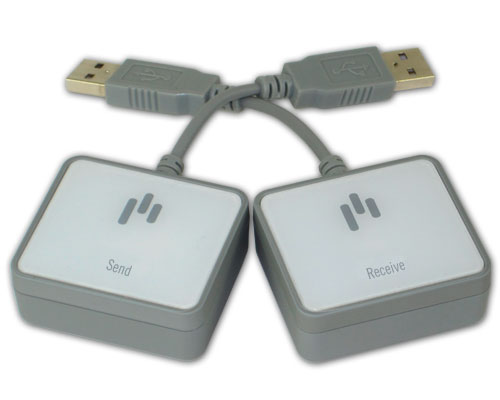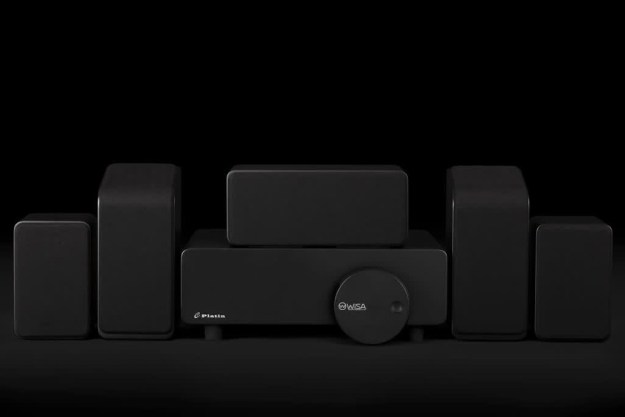 Aperion Audio introduced the Aperion Home Audio Link (nicknamed HAL), a wireless adapter which streams any audio format wirelessly from a computer, iPod, MP3 music player or mobile device to a variety of audio systems. Aperion claims that by adding more HAL Receiver units the music can be distributed to up to three rooms. So, for example, to hear the jams stored on your laptop you would plug the matchbox sized HAL “Send” unit into the USB port and it connects the HAL Receive unit into an AV receiver, plugs in the power adapter and the system links automatically—HAL does not require Wi-Fi, and uses the plain old 2.4GHz band instead.
Aperion Audio introduced the Aperion Home Audio Link (nicknamed HAL), a wireless adapter which streams any audio format wirelessly from a computer, iPod, MP3 music player or mobile device to a variety of audio systems. Aperion claims that by adding more HAL Receiver units the music can be distributed to up to three rooms. So, for example, to hear the jams stored on your laptop you would plug the matchbox sized HAL “Send” unit into the USB port and it connects the HAL Receive unit into an AV receiver, plugs in the power adapter and the system links automatically—HAL does not require Wi-Fi, and uses the plain old 2.4GHz band instead.
“Our customers have been asking our Home Theater Gurus for advice on wireless audio systems; we set out to find a reliable technology that we could advocate,” said Mike Hopkins, Aperion Audio’s Product Development Manager. “We created HAL to give consumers the opportunity to listen to all of their music or favorite internet radio stations wirelessly on their preferred sound systems and we’ve been able to do it simply with an elegant, affordable solution.”

Editors' Recommendations
- This accessory turned my AirPods into a giant mech head
- What is Sonos? What you need to know about the wireless music system
- Apple AirPlay 2 supports 24-bit lossless audio, but you can’t use it
- Apple HomePod mini vs. Google Nest Audio
- FaceTime with spatial audio is nothing short of magic


